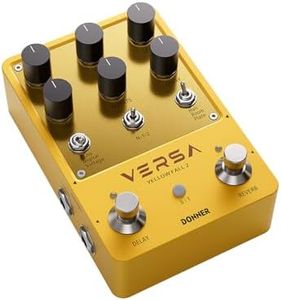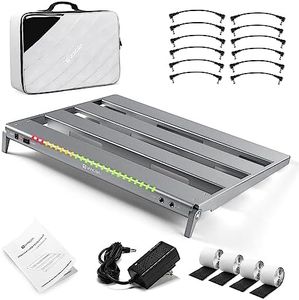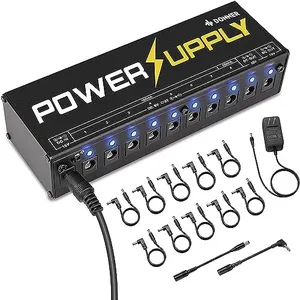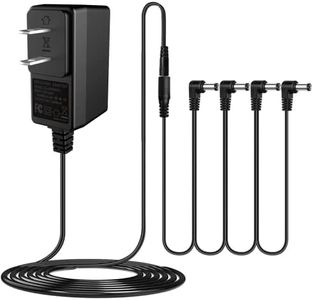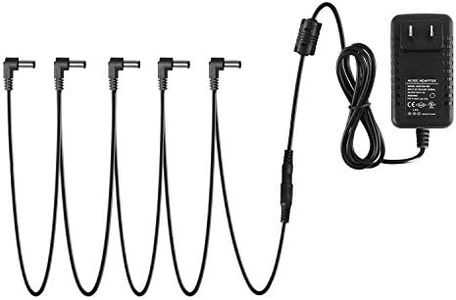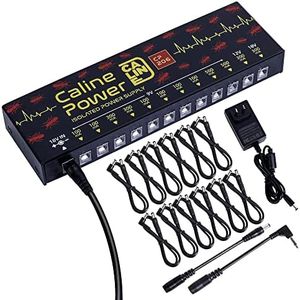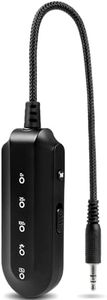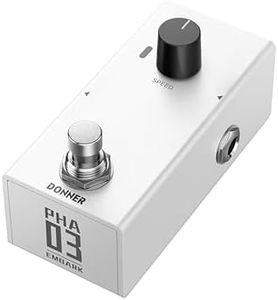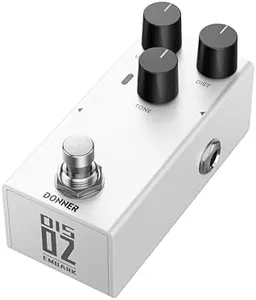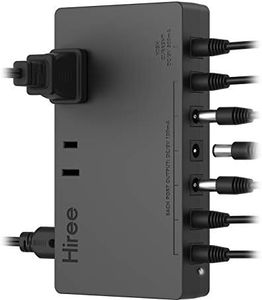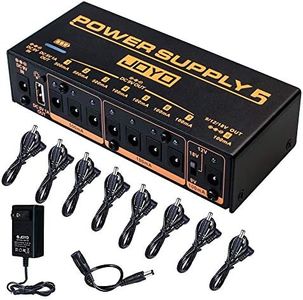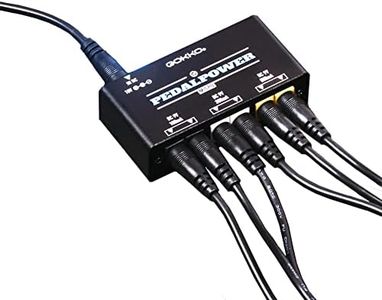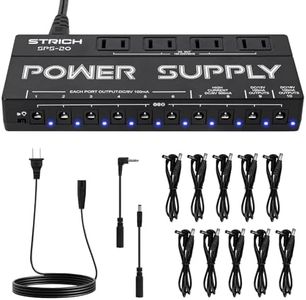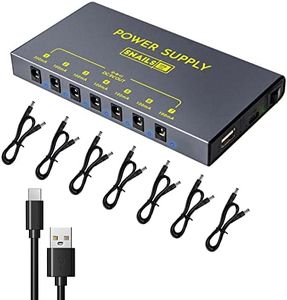We Use CookiesWe use cookies to enhance the security, performance,
functionality and for analytical and promotional activities. By continuing to browse this site you
are agreeing to our privacy policy
10 Best Guitar Pedal Power 2025 in the United States
How do we rank products for you?
Our technology thoroughly searches through the online shopping world, reviewing hundreds of sites. We then process and analyze this information, updating in real-time to bring you the latest top-rated products. This way, you always get the best and most current options available.

Buying Guide for the Best Guitar Pedal Power
Choosing the right guitar pedal power supply is crucial for ensuring that your pedals perform optimally and without unwanted noise or interruptions. A good power supply can make a significant difference in your overall sound quality and reliability during performances or practice sessions. When selecting a power supply, consider the number of pedals you have, their power requirements, and the type of power they need. Here are some key specifications to help you make an informed decision.Output VoltageOutput voltage is the amount of electrical potential provided by the power supply to your pedals. Most guitar pedals require 9V, but some may need 12V, 18V, or even 24V. It's important to match the voltage requirements of your pedals to avoid damage. If you have a mix of pedals with different voltage needs, look for a power supply with multiple voltage options.
Current (mA)Current, measured in milliamps (mA), indicates how much power the supply can deliver to your pedals. Each pedal has a specific current draw, and it's essential to ensure that your power supply can provide enough current for all your pedals combined. Add up the current requirements of all your pedals and choose a power supply that can handle at least that amount, with some extra headroom for safety.
Number of OutputsThe number of outputs on a power supply determines how many pedals you can power simultaneously. If you have a large pedalboard, you'll need a power supply with enough outputs to accommodate all your pedals. Some power supplies offer isolated outputs, which can help reduce noise and interference, providing a cleaner sound.
IsolationIsolation refers to how the power supply separates the power to each pedal. Isolated outputs prevent ground loops and reduce noise, which is especially important if you use multiple pedals. Non-isolated power supplies can be cheaper but may introduce unwanted hum or buzz into your signal chain. If you prioritize a clean and noise-free setup, opt for a power supply with isolated outputs.
Size and PortabilityThe size and portability of a power supply can be important, especially if you frequently travel or perform live. A compact and lightweight power supply is easier to transport and can fit more easily on your pedalboard. However, ensure that the smaller size doesn't compromise the number of outputs or the power requirements of your pedals.
Build Quality and DurabilityBuild quality and durability are important factors, particularly if you gig regularly or transport your gear often. A robust power supply made from high-quality materials will withstand the rigors of frequent use and provide reliable performance over time. Look for power supplies with solid construction and good reviews regarding their longevity.
Most Popular Categories Right Now
